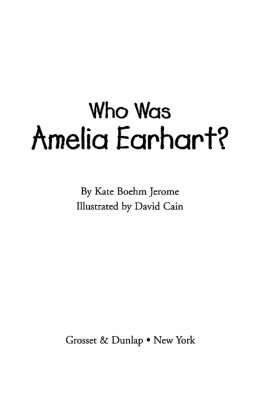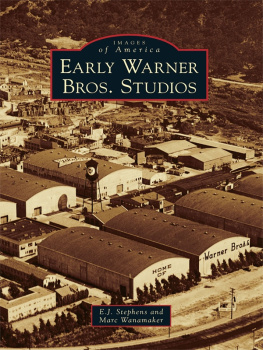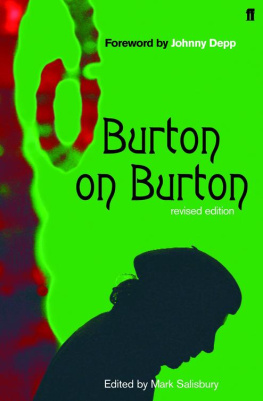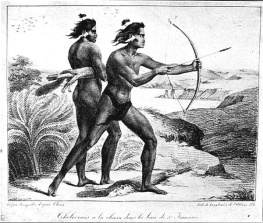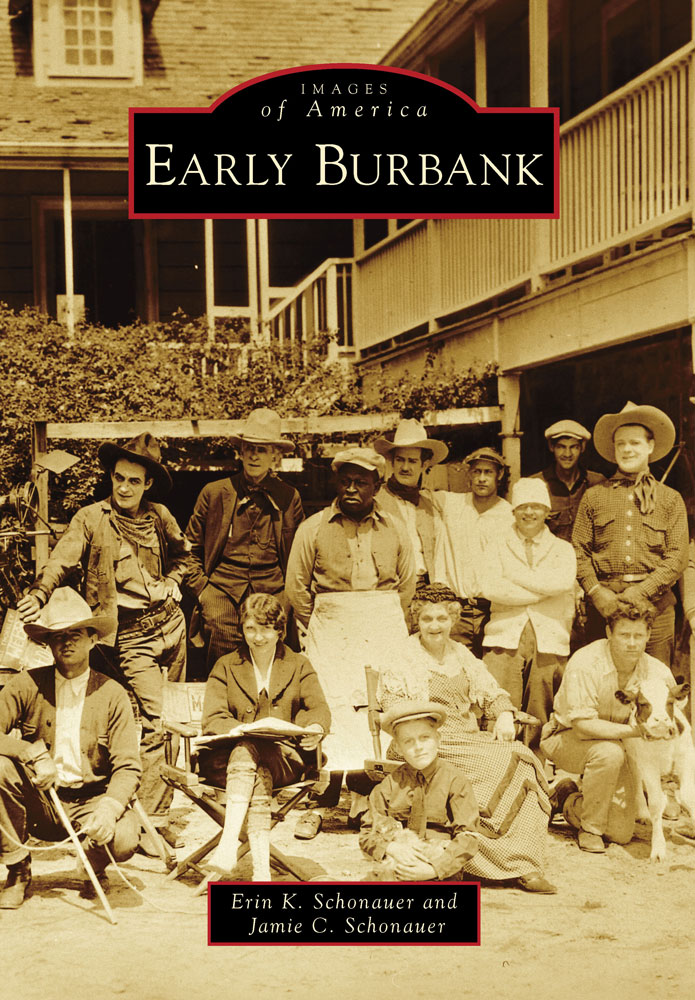
IMAGES
of America
EARLY BURBANK

A man of many trades, Dr. David Burbank was a professional dentist, an accomplished sheep rancher, and a savvy real estate investor. At 1075 West Burbank Boulevard, located at the intersection known as Five Points, stands a 12-foot bronze sculpture of Dr. Burbank, founder of the city. The sculpture was unveiled on January 12, 2010. (The authors.)
ON THE COVER: In the early 20th century, movie shoots took place on land previously owned by Dr. David Burbank. In this 1925 photograph, a film crew poses at the back of the ranch house once owned by Dr. David Burbank. The house was part of the Warner Bros. lot from 1928 until the 1950s. (The Burbank Historical Society.)
IMAGES
of America
EARLY BURBANK
Erin K. Schonauer and
Jamie C. Schonauer

Copyright 2014 by Erin K. Schonauer and Jamie C. Schonauer
ISBN 978-1-4671-3138-4
Ebook ISBN 9781439642887
Published by Arcadia Publishing
Charleston, South Carolina
Library of Congress Control Number: 2013947851
For all general information, please contact Arcadia Publishing:
Telephone 843-853-2070
Fax 843-853-0044
E-mail
For customer service and orders:
Toll-Free 1-888-313-2665
Visit us on the Internet at www.arcadiapublishing.com
To Burbankers of the past, present, and future
CONTENTS
ACKNOWLEDGMENTS
Many people have helped us along the way in our journey to capture just some of the plentiful pieces of Burbanks intriguing history. Thank you to Mike McDaniel and Wes Clark for allowing us to use vintage photographs from their historically rich website, Burbankia. Many thanks to the Burbank Tournament of Roses Association and its historian, Erik C. Andersen, who provided unlimited access to its archives and shared his wealth of knowledge with us. Thank you to Ron Dickson for sharing aviation images from his informative website, GoDickson.com, and to the Burbank Aviation Museum group for its efforts to preserve aviation history. We would like to thank the knowledgeable staff at the Burbank Public Libraries, the Margaret Herrick Library, and the Burbank Historical Society. Our gratitude goes to Ceci Stratford, Stacie Vournas, Jackie Forsting, Daniel MacPherson, Fermer Kellogg, Lansing White, Gayle Migden, Susan Miceli, Marva Felchlin, and Emma Jeane Starre. We appreciate all of your generosity and time. We would also like to send a sincere thank you to our editor, Jared Nelson, for his positive encouragement and guidance. And a very special thank you to our mom and dad for their continuous love and support.
Unless otherwise indicated, images are part of the authors collection. Other images appear courtesy of the following sources: Wes Clark and Mike McDaniels Burbankia (WC,MM/Burbankia); Burbank Tournament of Roses Association (BTORA); Burbank Historical Society (BHS); Burbank Aviation Museum (BAM), GoDickson.com/Aviation History of the San Fernando Valley (AHSFV); and photograph by Erin K. and Jamie C. Schonauer (EJS).
INTRODUCTION
Burbank is a very historical town, said Johnny Carson in his 1983 Tonight Show monologue. A lot of people think it was named after Luther Burbank. It was named after, I think, a fellow by the name of David Burbank, who was a dentist. And he came out and said this is a great place to have a toothache.
Carsons Burbank jokes became part of his late night repertoire, and this one has a twinkle of truth. Dr. Burbank, in fact, is the pioneering dentist for whom the city is named. In the early 1850s, Dr. Burbank, a New Hampshire native, traveled across the country by horseback and covered wagon. A new landscape awaited him across the vast plains and rugged mountains. Following trails marked by gold seekers, Dr. Burbank finally reached his destinationthe California coast. Upon arriving in San Francisco in the mid-1850s, he set up his dentistry practice. He left San Francisco shortly after the Civil War and arrived in Los Angeles in 1867. That same year, Dr. Burbank purchased over 9,000 acres of land in the San Fernando Valley, which included Rancho San Rafael and Rancho Providencia. The two ranchos became one, and today, this land is Burbank.
In the 18th century, before Dr. David Burbank, the land on which the city sits belonged to Spanish dons. In 1798, Jos Maria Verdugo acquired Rancho San Rafael through a Spanish land grant that included a considerable area of present-day Burbank. Rancho Providencia was located to the west of Rancho San Rafael. Rancho Providencia, created after Mexico declared its independence from Spain in the early 1820s, was granted to Comandante J. Castro, Luis Arenas, and Vincente de la Ossa.
In the 1850s, Americans began to settle in the ranchos. The first Americans to own land in Burbank were David W. Alexander and Alexander Bell, who purchased approximately 4,600 acres of Rancho Providencia from Vincente de la Ossa in 1851. In 1857, Missouri native Jonathan R. Scott acquired 4,603 acres of Rancho San Rafael from Julio and Catalina Verdugo, who inherited the land from their father, Jos Maria Verdugo. Dr. Burbank purchased Rancho San Rafael from Scott and Rancho Providencia from Alexander and Bell in 1867. After owning and cultivating the two ranchos for nearly 20 years, Dr. Burbank sold his acreage to the Providencia Land, Water and Development Company in 1886.
The land, beautifully located among the Verdugo Mountains, occupied the eastern section of the San Fernando Valley. The Providencia Land, Water and Development Company put the fertile farmland up for sale on May 1, 1887, the same day Burbank was founded.
On July 8, 1911, Burbank officially became a citythe first in the San Fernando Valley. The city began to quickly develop: houses were numbered, streets were named, electricity powered street lights and homes, and the city marshals office became responsible for law enforcement. In 1913, the city opened its first library, fire department, and public service department (Burbank Water and Power). Three years later, the city constructed its first city hall.
As the community grew, so did Burbanks businesses. By 1917, manufacturing began to thrive as farming faded. Prolific companies set up shop, including the Moreland Motor Truck Company; Empire China Company; Libby, McNeill and Libby; Andrew Jergens Company; Mission Glass Company; and Paramount Dairy.
Movie houses also beckoned those wanting to spend time out on the town. In 1919, the Loma Theatre opened at 319 East San Fernando Boulevard and proudly advertised films from stars like John Barrymore, Mary Pickford, and Gloria Swanson. Admission was 10, and moviegoers could purchase candies from the theaters sweet shop for 5. On August 2, 1919, the Victory Theatre opened at 205 East San Fernando Boulevard. Mr. Myers, who managed the theater in the late 1920s, said his playhouse would provide Burbank with only the best in pictures for the entire family at popular prices.
Besides catching a film, locals could listen to music, literature, and dramas on Burbanks first radio station, KELW. Owner Earl L. White, who founded the station in 1927, made a commitment to serve the city and an effort to connect with the locals. You and your friends are invited to come to the studio any time, was the motto spread by White and his station in the 1928 booklet Your Burbank Home.
In 1926, the city welcomed its first big film studio when First National Pictures broke ground on Olive Avenue near Dark Canyon Road. Warner Bros. purchased First National Pictures in 1928, gaining access to the large studio, its backlot, and stars such as Colleen Moore, Loretta Young, and Douglas Fairbanks.
Next page

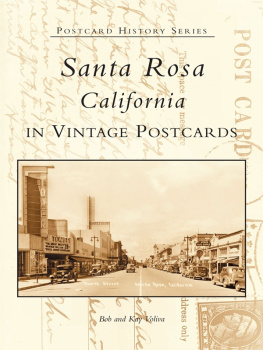


![Ashman Howard - Aladdin: Broadways new musical comedy ; [piano/vocal selections]](/uploads/posts/book/178685/thumbs/ashman-howard-aladdin-broadway-s-new-musical.jpg)
